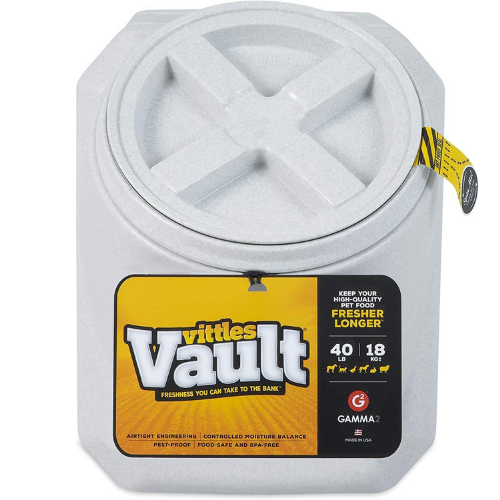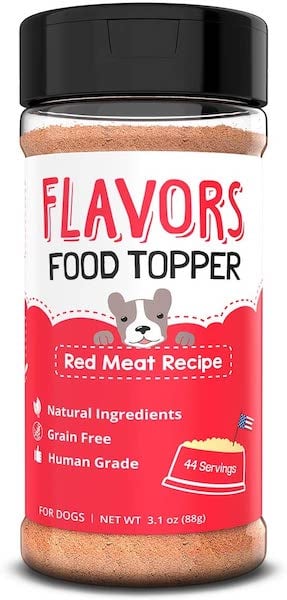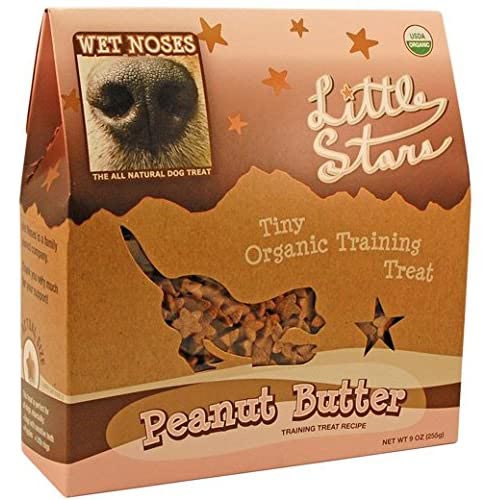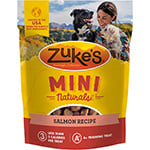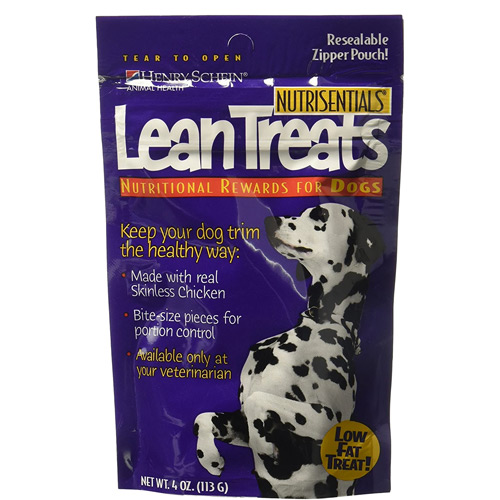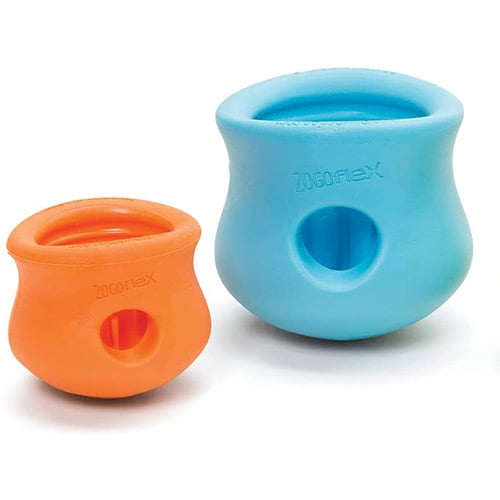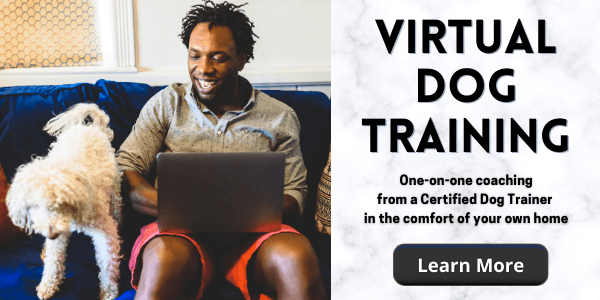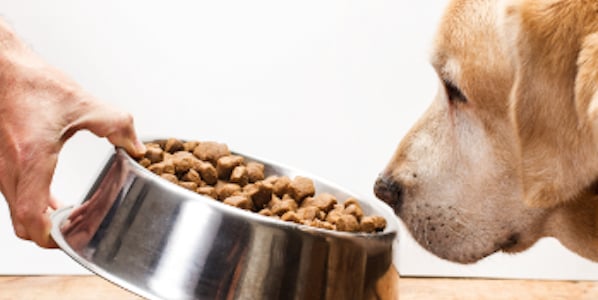 Is your dog turning up their nose when you put down their bowl? Has your senior dog gotten pickier about what they'll eat and when?
Is your dog turning up their nose when you put down their bowl? Has your senior dog gotten pickier about what they'll eat and when?
It's important for your dog to get the nutrition and calories they need to stay healthy, especially as they age.
Let's look at reasons your adult dog might not be eating and what you can do about it. If your dog has skipped a few meals and you're worried about their appetite, read on for tips to help them chow down.
If you have a puppy who isn't eating, check out "Why Your New Puppy Isn't Eating and What You Can Do About It" for more life-stage-specific reasons and tricks to increase their appetite.
Reasons Why Your Adult Dog Won't Eat
Medical Conditions
There are many medical issues that might be causing your dog to lose their appetite, some more urgent than others. Since some of these causes require immediate veterinary treatment, it's best to speak with your veterinarian if your dog isn't eating to determine your best course of action.
- If your dog hasn't eaten in two days and is otherwise healthy, call your veterinarian.
- If your dog has a medical condition, such as diabetes or kidney disease, contact your veterinarian if they've missed more than two meals.
Some medical reasons for a dog's loss of appetite include:
- Pain
- Dental problems
- Digestive upset, infection, or intestinal parasites
- Gastrointestinal obstruction
- Respiratory infection (such as kennel cough)
- Organ disease or dysfunction
- Cancer
- Side effects from medication
Other Reasons Your Dog Doesn't Want to Eat
Your Dog Might Be Stressed
Stress and anxiety can inhibit your dog's natural appetite. It's common for dogs that feel anxious to refuse food and even their higher-value dog treats. When a dog is anxious, their sympathetic nervous system (fight or flight) is activated and they're in no state to relax and eat some food — their appetite is suppressed.
This could happen due to an environmental stressor, such as a thunderstorm, fireworks, or loud ongoing construction noise nearby. Your dog might also feel stressed if there are visitors to the home, human or canine, and they aren't comfortable with all the hustle and bustle.
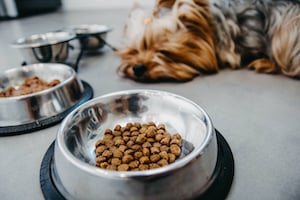
If your dog has recently gone through a transition, such as moving, being rehomed, or the loss of a family member (including a furry family member), they're going through an adjustment period.
These big life changes take time for your dog to acclimate to and return to their normal eating schedule and amount.
Give your dog a safe space to eat their meals where they aren't bothered by children, guests, or other animals in the home. You can plug in an Adaptil diffuser to release a natural calming pheromone.
If your dog has severe noise anxiety, speak with your veterinarian about possible prescription medications and calming supplements that might help.
Your Dog Might Not Like Their Dog Food
Sometimes, it really does come down to just not liking what you're offering. Just like humans, dogs develop food preferences. Their preferences are influenced by early-life experiences and genetics. Dogs have preferences for texture, moisture, hardness, and temperature.
Your Dog's Food Might Be Stale
A dog's sense of smell is much keener than ours. If they aren't eating, they might be sensing that the food has gone bad. Make sure that your dog's dry food is properly stored in an air-tight container, such as the Vittles Vault, and check to make sure it's not expired.
Your Dog is Getting Too Many Treats
Your dog might not be eating their regular meals because they're getting too many treats or chews at other times. They just aren't hungry for the same old dog food they get every day. Treats should be your dog's dessert, not their main course. Too many treats can result in a lack of interest in their regular meals and contribute to canine obesity.
Ideally, treats should account for no more than 10% of your dog's daily calories. Want to find out how many treats your dog can have every day? Check out our daily treat calculator and learn more about your dog's caloric needs.
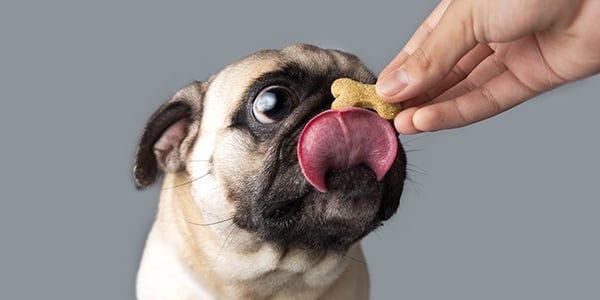
How to Stimulate Your Dog's Appetite
Change Your Dog's Food
Try changing your dog's food — but be careful to make the food switch easy on their stomach by changing it gradually. It can also help to stick with the same brand formula but a different texture or flavor (such as the addition of sweet potatoes). If you're changing brands completely, look for similar ingredients that your dog's digestive system is used to.
Start with mixing in a small amount of the new food with their old food, and then slowly increasing the new food amount in each meal. Here's an example of a week-long food transition (some dogs might need longer transitions, especially if they have a sensitive stomach):
- Day 1–2: Mix 25% new food with 75% old food
- Day 3–5: Mix 50% new food with 50% old food
- Day 6–7: Mix 75% new food with 25% old food
- Day 8+: 100% new food
Add Meal Toppers or Soften Your Dog's Food
Adding warm water to your dog's dry food and letting it soak for a few minutes makes it easier for your dog to chew if they are suffering from dental pain. Adding water can also increase the flavor's scent for your dog, which might encourage them to take a few bites.
You can also try adding warmed low-sodium chicken or vegetable broth (be sure there are no onions or garlic in the ingredients). The added aroma often stimulates their appetite enough that they consider eating a bit.
Many picky dogs are persuaded to eat their meal when their owners add a "topper," such as a spoonful of wet dog food, a bit of plain Greek yogurt, or pumpkin. As long as you're taking into account the added calories and potential stomach issues from high-in-fat or rich add-ins — and don't mind taking the time to add these kinds of toppers at mealtime — this can be an easy way to get your dog more interested in their food.
Since dogs have taste buds that sense sweets, you can try adding fresh blueberries, peaches, strawberries, and other dog-safe fruits to their food. You can give them in pieces or make a puree.
Remember, fresh fruits are sources of fiber but also sugar. Only use in moderation to prevent stomach upset and weight gain. Never give grapes or raisins since they are toxic to dogs.
Beyond the dog-safe food topper options you might already have in your fridge, there are many dog-specific meal toppers you can purchase. The Flavors Food Topper is an easy-to-add "kibble seasoning," which you can shake over dry food or mix with water to create a broth.
Safety Note for Raw Food Toppers: Raw foods and dog food toppers come with their own set of possible dangers, especially if your pet is young and does not yet have a fully developed immune system or in older animals with weakened organs and immune systems. Some of the potential bacterial contaminants include E.coli, salmonella, and listeria, amongst many others.
If you do decide to top your dog's food with a raw topper, look for products that are grown, harvested, and packaged in the U.S., which is super important from a product safety standpoint.
You can also try adding VetriScience Perio powder. This product has not only been found to stimulate your dog’s appetite, but it also helps maintain dental health.
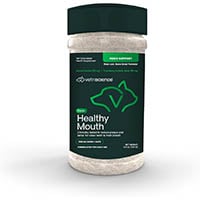
Another option that gives you double benefits is adding fish oil to their food. Many dogs love the taste and you gain several health benefits from it. Find out more about why fish oil is a great choice to add to your dog's diet in "The Benefits of Giving Your Dog Fish Oil."
There are also veterinary prescription canned foods (Hill’s a/d, Royal Canin, Recovery, etc.) that are designed to stimulate dog’s appetites. Speak with your veterinarian to see if that is an option for your dog.
Avoid Free Feeding Your Dog's Meals
Leaving your dog's food out for them to snack on whenever they feel like it might seem like a good way to get them to eat. However, free-feeding your dog makes it impossible to notice changes in appetite that could be signs of an underlying medical problem.
Allowing your pup to "graze" throughout the day also means it's harder to give medications that must be given with food, can cause potty training problems, and, if not carefully monitored, can increase the chance of obesity. Plus, it's difficult to know whose food was eaten if you have multiple pets in your home. You don't want your food-obsessed Lab snarfing down your senior Poodle's prescription diet kibble.
If you're making the switch from free-feeding your dog to specific mealtimes, set aside 15 minutes for your dog to eat their meal. If they don't eat it, pull up their food until the next mealtime.
Manage Your Dog's Treat Intake
It can be hard to limit the number of treats you give your dog, especially if your dog is in training classes or actively training every day at home with you. Here are some ideas to help you cut down on the amount of treats you're giving your dog.
Use Dry Dog Food as Training Treats
Set aside a portion of their meals to use for training throughout the day. Some dogs will work just as hard for their kibble as they will for a training treat, especially if they're hungry. If your dog needs something "extra" for their treats, you can make the dry food more exciting by storing it in a bag with higher-value treats, so the essence of turkey hot dog rubs off on the kibble bits.
PRO TIP: If your dog eats canned food, you can also use it as a training treat! To keep your fingers nice and clean, just use a training treat tube. I use a silicone travel shampoo bottle and stuff it with my dog's wet food. When I want to reward him, I just squeeze and he licks it clean. Then just pop on the cap and put it back in your pocket.
Use Low-Calorie Training Treats
Pay attention to the treats you're giving your dog, especially if they could stand to lose some weight. There are many low-calorie treats available, such as Wet Noses Little Stars (only 1 calorie per treat!) or Zuke's Mini Naturals (3.5 calories per treat). Look for low-fat treat options as well, such as Lean Treats.
You can even use bits of cucumber, broccoli, or green beans as treats for your pup! Just be sure to steer clear of produce that can be toxic to dogs, such as onions, grapes, or pit fruits.
Want some veterinarian-approved healthy training treat options? Read "Choosing the Best Dog Treats" for ideas and to learn how to calculate the fat content in your dog's treats.
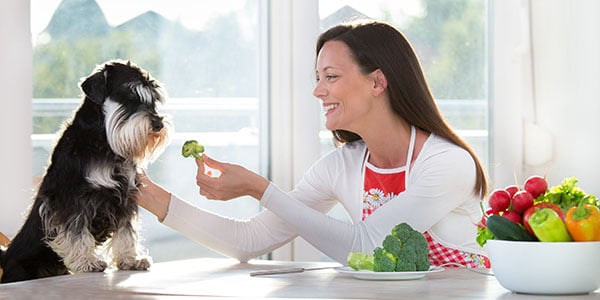
Use Real-Life Rewards Instead of Treats
As your dog advances through any training, you'll want to fade out using training treats for every performance of a behavior. Try working in real-life rewards for your dog for their good behavior, such as getting to go sniff, opening the door to go out to the yard, and praise and petting (if your dog enjoys being petted).
You can also use toys as rewards, especially for more active training behaviors like come-when-called. While treats are a powerful motivator, oftentimes your dog just wants your attention or to play! Use that to your advantage when cutting down on the treats while training.
Use Interactive Feeders or Hand Feed Your Dog
Make Mealtime Fun
If you're looking to make mealtime a bit more exciting for your pooch, using an interactive feeder or food puzzle can engage their foraging instinct. For some of my training clients, simply making mealtime a game increased their dogs' appetite and helped them finish their meals.
I highly recommend the Toppl from West Paw, since it's easy to stuff and clean (just pop it in the dishwasher). Another fantastic option is using a snuffle mat.
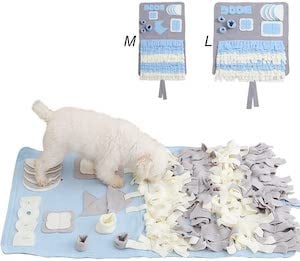
Hand Feeding
For senior pets that aren't as interested in finishing their meals or for dogs that are recovering from surgery or other veterinary treatment, often feeding by hand helps them get the calories they need.
Post-op medications can make dogs a bit loopy, and having some help getting food into their mouth makes mealtime easier.
PRO TIP: When my senior dog needed to eat her wet food after dental surgery, I pretended to snack on her food myself to increase her interest and then offered her each bite by hand. I'm not sure if I tricked her into thinking it was "human food," but she did seem more excited about getting it from me than from a bowl. Hand feeding also made it easy to slip in her medications without her noticing.
For senior pets, using elevated food bowls can often make it easier for them to eat, too. But if your senior has trouble standing long enough to eat, you can try a non-slip tilted food bowl.
Remember, if your dog is refusing to eat for more than two days (or two meals if they have underlying medical conditions), contact your veterinarian to make sure they get any needed medical attention.
Have you found a tried-and-true way to get your dog to eat their meals? Let us know in the comments below!


